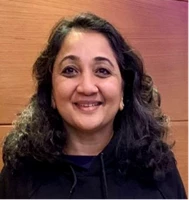Kakuma refugee camp, in northwestern Kenya’s Turkana County, houses over 150,000 refugees. The majority are South Sudanese followed by Somalis. Established in 1992 in one of Kenya’s most remote areas, it is one of the longest-lasting refugee camps in the world, and refugees have become an integral part of the area’s social, cultural, and economic fabric.
There are a variety of descriptive studies about the interactions between refugees, the aid community, and hosts in the vicinity of Kakuma camp, but none provide estimates of the net impact to locals of the presence of refugees and aid. A new study undertaken by the World Bank, UNHCR and the University of Notre Dame has revealed that while there are sections of the host population and the economy that have not been able to benefit, the overall economic and social impact of refugees in Kakuma is positive, not just in the immediate vicinity but also in the surrounding Turkana County.
A new social impact analysis titled “Refugee Impacts on Turkana Hosts” documents a complex and dynamic pathway of coexistence for the Turkana hosts. Here, the narratives are shaped by interactions between hosts and refugees as well as by the interface with external factors, such as climatic and environmental changes, especially droughts and famine that further impinge on the suffering, resilience, and dignity of the hosts. Specifically, the analysis shows that the presence and activities of the refugees have complex effects on the Turkana host community. These range from positive impacts including enhanced social interactions and networks; better access to markets; and higher indicators of health and physical wellbeing, while the negative impacts include incidences of violence or indignity.
Refugees and the Turkana of Kakuma tend to share a view about one other as the violent “other”; as difficult, greedy, and irrational people with unreasonable demands for goods and resources to which they are not entitled; and not particularly sensitive to women and children. This view runs concurrently and contrasts with the counter view where both groups see each other as good people, fellow sufferers, friends, and neighbors, and in which they seek to understand context, contingency, justice, and fairness.
The major findings from the Social Impact Analysis are:
Finding 1: The Turkana who interact with the refugees have (mostly) positive perceptions of refugees. The perceptions of host community members living in and near Kakuma toward refugees vary in ways that are radically and significantly different from members living elsewhere. The frequency of interactions between host and refugee, which corresponds to the distance from the camp, is also correlated with the complexity of perceptions held by the host community. The likelihood that a member of the host community has negative perceptions of refugees does not significantly vary with distance, but the likelihood that they would have positive perceptions of refugees was greater among those closer to the camp.
Finding 2: The refugee presence seems to benefit Turkana women more than Turkana men. Turkana women benefit the most from the refugee and UN/NGO presence by providing labor to the refugees (housework, fetching water/food) and goods (charcoal, firewood, agricultural crops such as sorghum) in return for both food and cash, which enables them to feed their children and families. Women also have lasting friendships and support networks with the refugees. However, they do experience violence, both in the camp and outside, especially when they forage for firewood.
Finding 3: The presence of refugees is highly correlated with greater physical well-being of the host community. Measured by Body Mass Index and (especially) the Sum of Skin Fold (SSF) measurements, the analysis suggests that the host community of Kakuma has better nutritional access/status than those in other areas of Turkana County, with the exception of the more developed Lorugum area. Furthermore, higher SSF values, on average, are excellent indicators of access to foods that provide higher energy status.
Finding 4: The presence of refugees may lead to differences in psychosocial stress within the host community. The Turkana of Kakuma (and Lorugum) report more worries related to jobs, unemployment, education, and school fees – worries that would only emerge when such opportunities exist within the area. On the other hand, worries over ill health, thirst, and livestock illness, are ubiquitous in marginalized areas, but especially expressed by older men and women across the study sites.
The people of Turkana have been exemplary hosts to the refugees of Kakuma. Across age groups and gender, those Turkana living in close proximity to the refugees, view their presence as good and beneficial. It is also encouraging that the Turkana are willing to engage the refugees and the larger relief process in a partnership to develop Kakuma as a sustainable and thriving settlement that contributes to dignity, resilience and development for the hosts as well.


Join the Conversation